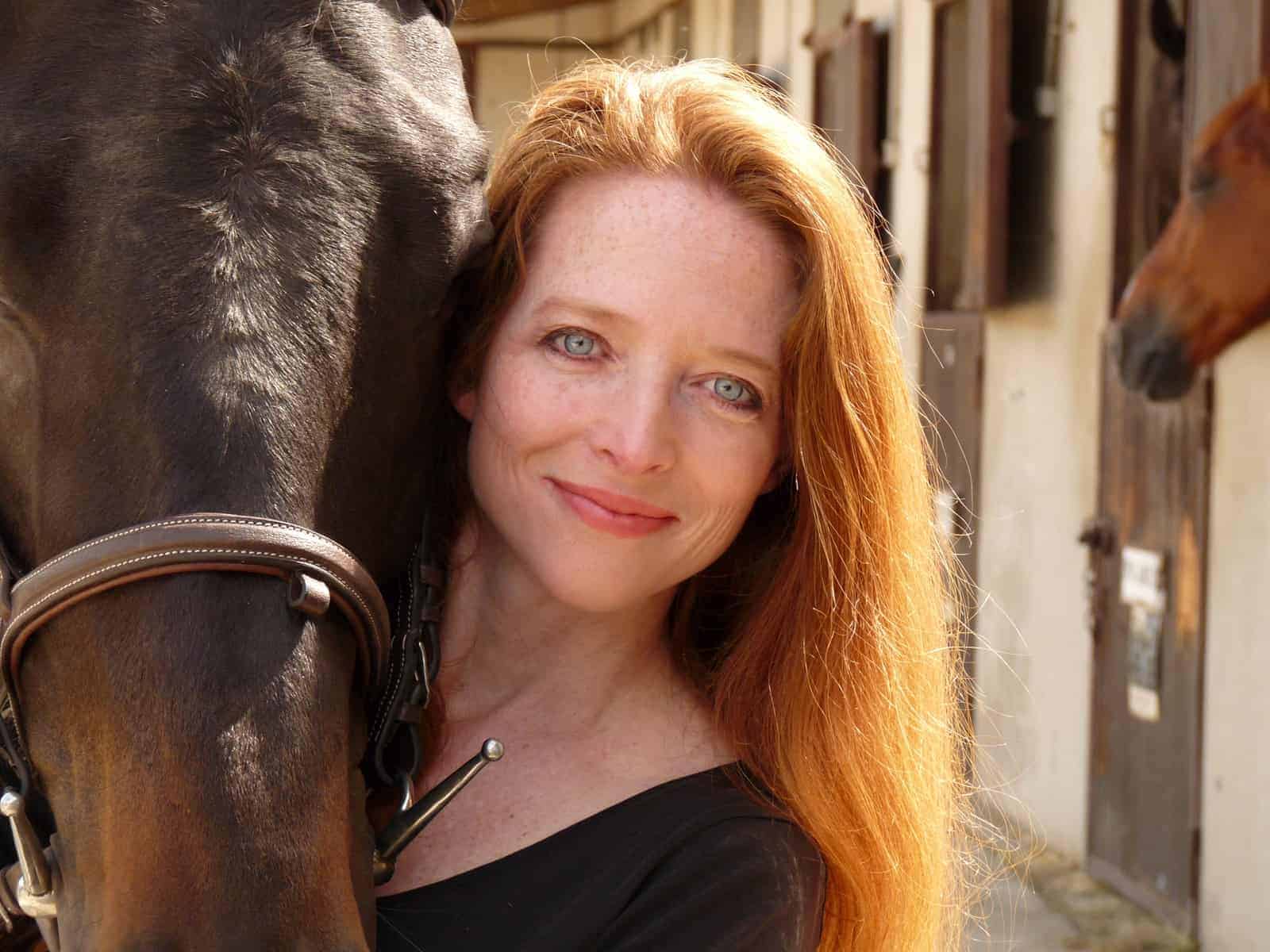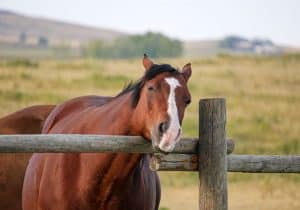Faced With Scary Objects, Is Your Horse Left- or Right-Brained?

Horses tend to look at scary or surprising things with one eye—but the eye they choose depends on the individual horse.
Previous study results have suggested horses investigate new and scary objects mainly with the left eye and, hence, the right brain. New research by Italian behaviorists, however, has revealed the “unexpected” finding that horses use whichever eye—and brain hemisphere—they prefer on an individual basis when they’re tackling sources of potentially negative emotions.
“It was unexpected to have such an even split of horses that show left and right-side biases (in our study),” said Adam Reddon, PhD, a senior lecturer in Behavioral Ecology and co-program leader for Animal Behavior in the School of Biological and Environmental Sciences at Liverpool John Moores University, in the U.K.
Reddon and his fellow researchers observed 77 Italian saddle horses as they reacted to a yellow latex party balloon inflating suddenly in their home stalls. The scientists, hidden from sight, inflated the balloon remotely with tubes and recorded the animals’ reactions using a camera installed just above the balloon. The horses included mares and geldings aged 4 to 24 living in stalls at seven riding centers, all having regular paddock turnout.
On average, the horses spent 48 seconds looking at the inflated balloon with a single eye and only nine seconds looking at it with both eyes, the researchers reported.
Although some horses switched from eye to eye when looking at the balloon with monocular vision, the majority—56 of the 77—clearly preferred one eye for investigation, they stated. Of those, 30 preferred the right eye and 26 preferred the left eye. Age, sex, and horse position when the balloon inflated did not affect their eye preferences.
Scientific studies in a wide variety of species have indicated that, in general, people and animals use the right brain to process emotions and the left brain to analyze and categorize. In horses scientists have shown stress can lead to a right brain bias and the animals use their right brain to process negative stimuli.
“We had predicted that most of the horses would have a negative emotional response to the surprising sudden appearance of the balloon and that this information would be processed preferentially by their left eye and hence right hemisphere, fitting with some (previous studies),” Reddon said.
“It is expected that you will have some horses show no clear preferences and some show the opposite (right eye) preference,” he continued. “The surprising bit was that we found such equal numbers of left- and right-eye biased individuals.”
The differences in results compared to earlier studies might be due in part to the large number of study horses and the team’s highly standardized testing and observation methods, Reddon said. But it’s more likely to be a reflection of differences in the way horses perceived the balloon’s appearance: scary or simply interesting, he said.
“Some might have been more frightened and others more curious or interested, and this might explain their different eye use preferences,” said Reddon. “Correlating these results with other sorts of personality or cognitive tests would be an interesting future direction.”
For co-author Paolo Baragli, DVM, PhD, researcher in the University of Pisa’s Department of Veterinary Sciences, the results underline the complexity of brain laterality. “Cerebral lateralization is a complex phenomenon,” he said. “A lot of factors affect it, and there is the possibility that equine scientists tend to simplify too much.”
Reddon added he’d like to try to connect these behavioral results with motor laterality—horses’ natural preferences for one leg or the other when moving or working under saddle.
“It would be interesting to examine the relationship between motor preferences and sensory biases in particular,” he said.
The study, “Horses show individual level lateralisation when inspecting an unfamiliar and unexpected stimulus,” was published by PLOS One on Aug. 5, 2021.

Written by:
Christa Lesté-Lasserre, MA
Related Articles
Stay on top of the most recent Horse Health news with















